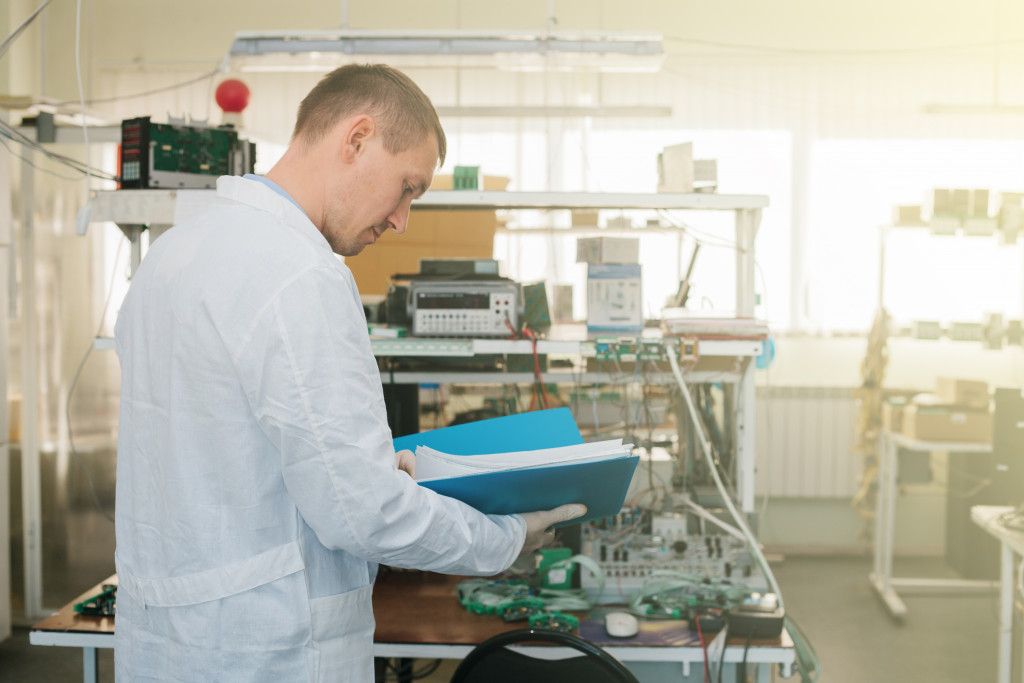Manufacturing hard disk drives (HDDs) requires more than just the right equipment and tools. It also requires the proper facilities to ensure that all components are produced with high quality and reliability.
These facilities must-have features such as clean rooms, automated assembly lines, testing labs, and storage areas for raw materials and finished products. In addition to these requirements, it is essential to have a well-trained staff of engineers who can develop new HDD designs and maintain existing ones.
With the right combination of personnel, technology, and infrastructure, manufacturers can produce reliable HDDs that meet customer demands while keeping costs low.
Assembly Lines
The assembly line is integral to effective, efficient, and cost-efficient mass production. Assembly lines have been used in manufacturing since Henry Ford invented them in 1913. In recent times, assembly lines are often used in developing and constructing hard disk drives.
HDDs must be carefully assembled and tested to ensure that they function correctly. An assembly line reduces complexity and dramatically speeds up the production process by creating a formulaic sequence of tasks that employees complete as components move down the line.
This allows a goods-producing workforce to focus on one specific task at each station, resulting in labor costs that are far lower than with traditional methods of production. The construction of an assembly line should consider both ergonomics and safety, with ample space for workers along pipes carrying necessary items such as power or water.
Testing Labs
Testing labs play an important role in the hard disk drive manufacturing industry, as they are essential for ensuring the quality and reliability of these devices. These are specialized rooms where you can use various equipment and machines to simulate the functions that hard disk drives need to endure while in use.
To ensure optimal performance, you must construct the lab with air conditioning systems that keep humidity levels at around 45-55% and maintain a consistent temperature between 18 – 22 degrees Celsius.
Additionally, the lab should be designed to minimize electromagnetic interference and vibrations from outside sources, as this could potentially disrupt the testing procedures or generate false results. With all these criteria met, testing labs allow manufacturers to produce premium quality hard disk drives that perform reliably and confidently.
Cleanrooms
Cleanrooms are usually used in manufacturing electronics that require fewer airborne particles so they won’t be subject to damage or degradation. One industry where cleanrooms are especially important is the hard disk drive sector. These devices necessitate an ultra-clean environment during assembly and testing stages to ensure their quality and functionality.
Cleanroom construction should have airborne particle control commensurate with its intended use; for example, a simple Class 10, ISO 4 Cleanroom will suffice for hard disk drives, whereas semiconductor fabrication might require a Class 1, ISO 1. YOu should also pay attention to ambient temperature, humidity levels, and airflow rates to maintain the optimal air quality in the room.
Overall, an appropriately designed and maintained cleanroom can increase manufacturing efficiency by minimizing contamination and reducing scrap rate – making it a key component of many industries, including HHD manufacturers.

Storage Areas
Storage areas have become an integral part of any manufacturing activity. It is essential when it comes to the manufacturing of hard disk drives because they require precision in production and efficient storage. You can only ensure this if the storage area is designed with safety and convenience as its primary objective.
It would help if you constructed the storage area to ensure proper segregation of finished parts from raw materials so that miscellaneous items cannot get lost or misplaced. It should also ensure that each component gets its shelf or container with ample sunlight and ventilation to ensure its quality and longevity. If these points are adhered to, then not only will the hard disk drive production go smoothly, but it will also pose fewer risks due to inadequate storage solutions.
Quality Control Facilities
Quality control facilities are fundamental for the successful manufacturing of hard disk drives because they play a significant role in assessing and auditing product quality. These facilities should be carefully designed to provide reliable information regarding the accuracy of standards and any discrepancies present.
The facility should include test procedures to measure attributes for each product, facilities for monitoring tests during production, and review processes to identify any defective items before releasing them. Effective quality control management also allows companies to make quick adjustments to their operations and maintain product consistency across different batches.
Therefore, when setting up a quality control facility, measures such as accurate record-keeping, adequate staffing levels, and compliance with procedural requirements must be all given due consideration.
These are just some of the essential facilities needed to manufacture hard disk drives successfully. By deliberately designing and constructing these facilities, companies can optimize their quality without breaking the bank. This will ensure reliable products that meet customer demands and remain profitable for the manufacturer.

